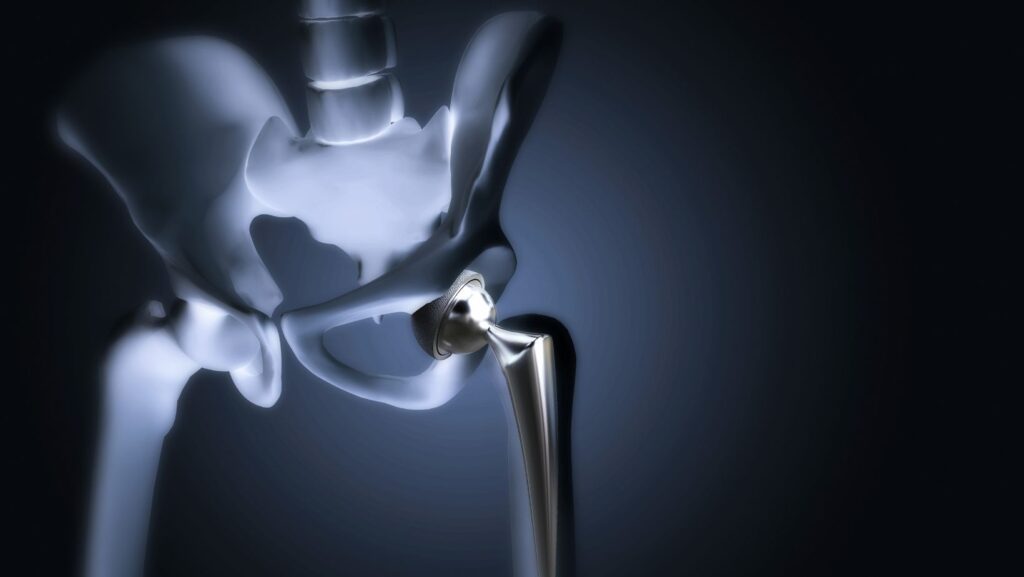Severe bike accidents can lead to a variety of injuries, including significant damage to the hip joint. One critical aspect of treatment for these injuries may involve hip fluid replacement. This procedure can be essential for restoring mobility and reducing pain for victims of bike accidents.
For those injured in bike accidents, consulting a Las Vegas bike accident attorney can be crucial in navigating the legal complexities and securing compensation for medical expenses and other related costs.
Hip Joint Trauma in Bike Accidents
Bike accidents can result in severe trauma to the hip joint due to the impact of falls or collisions with vehicles. The hip joint, crucial for mobility and stability, can suffer from fractures, dislocations, or damage to the cartilage and surrounding tissues. Such injuries often lead to intense pain, swelling, and reduced range of motion, significantly impacting the victim’s quality of life.
The force of a bike accident can cause a hip fracture, particularly in older adults whose bones may be more brittle. Additionally, damage to the soft tissues, such as ligaments and tendons, can lead to joint instability and chronic pain. Immediate medical attention is essential to diagnose the extent of the injury and begin appropriate treatment, which may include hip fluid replacement to restore joint function and relieve pain.
The Procedure of Hip Fluid Replacement
Hip fluid replacement, also known as viscosupplementation, involves the injection of lubricating fluid into the hip joint.

Here are the key aspects of this procedure:
- Purpose: The injected fluid, often made from hyaluronic acid, mimics the natural synovial fluid that cushions and lubricates the joints. The goal is to reduce pain and improve mobility by enhancing the joint’s lubrication and shock-absorbing properties.
- Treatment Process: The procedure typically involves a series of injections administered directly into the hip joint. The number and frequency of injections can vary depending on the specific needs and condition of the patient.
- Benefits: Viscosupplementation can be particularly beneficial for individuals with joint damage due to injury or degenerative conditions like osteoarthritis. By restoring the lubrication in the hip joint, the treatment helps reduce friction between the bones, alleviate pain, and improve overall joint function.
- Considerations: This procedure is often considered when other treatments, such as physical therapy or medication, have not provided sufficient relief. It offers an alternative for patients seeking non-surgical options to manage joint pain and improve mobility.
- Effectiveness: The effectiveness of viscosupplementation can vary, with some patients experiencing significant relief while others may have more modest improvements. It is important for patients to discuss potential outcomes and expectations with their healthcare provider.
Advantages of Hip Fluid Replacement
The primary benefit of hip fluid replacement is the significant reduction in pain it can provide for patients with damaged hip joints. This pain relief can lead to improved mobility and a better quality of life, allowing patients to return to their normal activities more quickly. For individuals who have suffered severe hip injuries in bike accidents, this procedure can be a crucial part of their recovery plan.
Additionally, hip fluid replacement can delay the need for more invasive procedures, such as hip replacement surgery. By improving joint function and reducing pain, patients may be able to avoid or postpone surgery, which involves longer recovery times and greater risks. The minimally invasive nature of viscosupplementation makes it an attractive option for many patients looking for effective pain management and improved joint health.
Potential Risks and Side Effects
While hip fluid replacement is generally considered safe, there are potential risks and side effects that patients should be aware of. Some individuals may experience temporary pain or swelling at the injection site, and there is a small risk of infection. It is important for patients to discuss their medical history and any potential allergies with their healthcare provider before undergoing the procedure.
Patients should also have realistic expectations about the outcomes of hip fluid replacement. While the procedure can provide significant pain relief and improved mobility, it may not completely eliminate symptoms or restore full joint function. Regular follow-up appointments and ongoing management of the underlying condition are essential to achieving the best possible results.
Financial Impact of Treatment
For those injured in bike accidents, the costs associated with treatments like hip fluid replacement can be substantial. Medical bills, rehabilitation costs, and time off work can create a significant financial burden. Consulting a Las Vegas bike accident attorney can help victims navigate the legal process and pursue compensation for these expenses.

An experienced attorney can assist in gathering evidence, negotiating with insurance companies, and representing the victim in court if necessary. Ensuring that all medical costs, including those for procedures like hip fluid replacement, are covered in the compensation claim is crucial for the victim’s financial recovery and overall well-being.
Rehabilitation Strategies
Rehabilitation is a critical component of recovery following hip fluid replacement. Physical therapy plays a vital role in restoring strength, flexibility, and function to the hip joint. A tailored rehabilitation program can help patients gradually increase their activity levels, reduce pain, and improve their overall quality of life.
Patients should work closely with their healthcare team to develop a comprehensive rehabilitation plan that addresses their specific needs and goals. Consistent follow-through with prescribed exercises and therapies is essential for achieving the best outcomes. Regular monitoring and adjustments to the rehabilitation plan can help ensure continued progress and prevent complications.
Long-Term Health and Mobility
The long-term outcomes of hip fluid replacement can be highly positive, particularly when combined with a thorough rehabilitation program. Many patients experience significant improvements in pain levels, joint function, and overall mobility. These improvements can lead to a better quality of life and the ability to engage in activities that were previously limited by hip pain.
For those who have suffered severe hip injuries in bike accidents, the ability to regain mobility and reduce pain can be life-changing. It is important for patients to maintain regular follow-up appointments with their healthcare provider to monitor their progress and address any ongoing issues. Staying proactive about joint health and adhering to recommended lifestyle changes can help sustain the benefits of hip fluid replacement over the long term.
